Meanwhile, back in Ireland…
 The usual rivalries had been going on since Cromwell’s death and the collapse of the Commonwealth in Ireland, and they seized this and declared that, and fought among themselves, trying to establish the right of Charles in Ireland, even inviting him to invade the country, but the exiled king was more interested in regaining his father’s throne first. On doing so, and being established as King of England, Charles was unanimously proclaimed King of Ireland and the commonwealth parliamentary union dissolved by the king. Initially he allowed religious toleration, however Catholics in general were not returned the land stolen from them and given to Protestant settlers under Cromwell; some were, but on balance only about twenty percent of the lands were returned to Catholic hands.
The usual rivalries had been going on since Cromwell’s death and the collapse of the Commonwealth in Ireland, and they seized this and declared that, and fought among themselves, trying to establish the right of Charles in Ireland, even inviting him to invade the country, but the exiled king was more interested in regaining his father’s throne first. On doing so, and being established as King of England, Charles was unanimously proclaimed King of Ireland and the commonwealth parliamentary union dissolved by the king. Initially he allowed religious toleration, however Catholics in general were not returned the land stolen from them and given to Protestant settlers under Cromwell; some were, but on balance only about twenty percent of the lands were returned to Catholic hands.
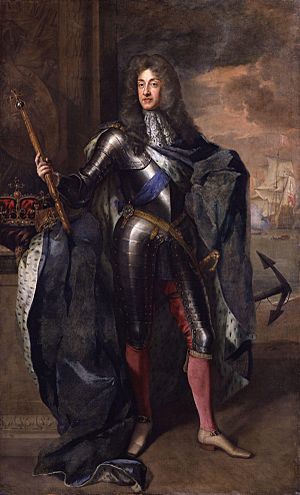
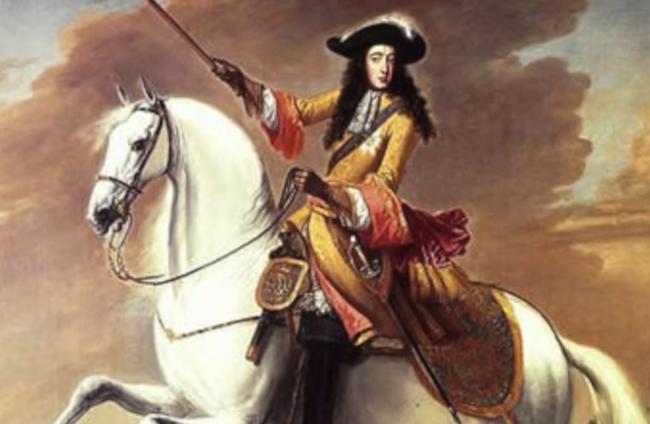 The War of the Two Kings: (1688 - 1691)
The War of the Two Kings: (1688 - 1691)
The reign of James II did not last long. Three years after his accession on the death of his brother, he was deposed and England was once again a Protestant monarchy, and has remained so ever since. His dissolution of Parliament when they refused to pass new tolerance laws aimed at Catholics, and the birth of his own son, a Catholic and now heir to the English throne, barring his daughter Mary, a Protestant, from the succession, led to what is known to history as The Glorious Revolution. Mary ascended the throne as Mary II, ruling jointly with her husband, William of Orange. James, defeated in battle, his army scattered, fled to France.
He landed in Ireland in 1688 with French backing and attacked Ulster, where the majority of Protestants lived. Jacobite* commander Richard Hamilton secured eastern Ulster while a rising in Scotland helped James’ cause, and while King William preferred to tackle the Irish invasion at its source - France - he was convinced to commit troops so as not to be seen to be abandoning the Irish Protestants in Ulster. The siege of Derry, which had been going on since April, was broken by William’s forces in July, and the death of Viscount Dundee, who had raised the Jacobite forces in Scotland, further weakened James’ position, as the war began to swing against him. The final blow that loosed the Jacobite hold on Ulster was the battle of Newtownbutler, where James’ forces failed to take Enniskillen.
Pushed back to Dundalk by the newly-arrived Duke of Schomberg, who took Carrickfergus at the end of August, James holed up there while the battle stalled for the winter. With little resources to rely upon in piss-poor Ireland, supplies had to be shipped in and this was not made any easier by the inexperience of Schomberg’s agent, leaving his men virtually to starve after six thousand had died from disease, and leading John Stevens, an English Catholic serving in the Grand Prior Regiment to remark, on surveying the abandoned camp later "besides the infinite number of graves a vast number of dead bodies was found there unburied, and not a few yet breathing but almost devoured with lice and other vermin. This spectacle not a little astonished such of our men as ventured in amongst them."
As the war entered its second year, the usual rivalries and differences surfaced in the Irish Parliament between the Old Irish, who wanted the lands back which had been confiscated from them by Cromwell, and those under Richard Talbot, Earl of Tyrconnell and Lord Deputy of Ireland, who were in the minority of those who had benefited from the land transfer. These latter, seeing the war dragging on and not turning in their favour, suggested a compromise with William, but the Old Irish, wanting Irish autonomy, were against this. The French, though willing to commit troops to James’ cause, only supplied enough to allow him to fight the war, not win it, as keeping William busy meant that his eyes were diverted from France. In other words, as long as the English King was fighting the man who wanted to take (or re-take) his throne, he would not have time to consider invading or making war upon the old enemy.
Not that the French and Irish got on at all, despite both being fiercely Catholic and fiercely anti-English. No, indeed. The Irish hated the French, especially the suggestion of their envoy Jean-Antone de Mesmes, known as d’Avaux, that James retreat to the Shannon in County Clare and destroy everything in between as they went, including the capital of Dublin. For his part, d’Avaux had nothing but contempt for the Irish, confiding to his successor that they were 'a poor-spirited and cowardly people, whose soldiers never fight and whose officers will never obey orders.” Oi! C-C-comeover heren’ say tha’, ye froggie bastad!
* Followers of James II were called Jacobites, don't ask me why.
The Battle of the Boyne (July 11 1690)

Perhaps one of the most famous battles in Irish history, the Battle of the Boyne was the turning point of the war, at least as far as James personally was concerned, the defeat from which he never recovered. William’s army of about 36,000 was made up of soldiers from many different nations, perhaps what might be called today a coalition, while James had about 23,000, mostly French and Irish, with some Scottish and a few English. William’s troops, though his army had only been recently put together and so had seen little action, were better equipped and drilled than those of his enemy, possessing the newest flintlock muskets, and while James’s Jacobite cavalry were a fine fighting force, his infantry was largely made up of Irish peasants, who had little to no fighting experience and often were armed with scythes and pitchforks.
William made his way from his victory at Carrickfergus south towards Dublin, but was stopped by James’ forces about thirty miles from the capital, at the River Boyne. Control of the ford on the river would allow them access to the road to Dublin, so William sent a diversionary squad to cross the river at Roughgrange, little realising that there was a deep swampy ravine there, and when James’ forces intercepted them, neither could get at the other and had to leave it to the artillery to fight. So move, countermove, volley, slash, attack, pincer blah blah blah and eventually William won the day. James legged it back to France, enraging the Irish who had fought for him, and continued to fight on in his presence. William rode triumphantly to Dublin, and issued the Declaration of Finglas, which offered amnesty to any ordinary Jacobite soldiers, as long as they surrendered by a given date, but excluded their leaders.
 The Twelfth
The Twelfth
Ever since the founding of the Protestant Orange Order in 1752, William's victory at the Boyne has been celebrated and commemorated on July 12 in Ulster. As the route through which their commemoration march passes goes through Republican areas, tensions have flared and violence erupted historically as nationalists consider the Orangemen to be provoking them by crowing over their victory. The Twelfth was, for a long time, a nexus for unrest, protest and violence in Northern Ireland, especially during The Troubles.
James may have given up the fight, but the Irish still had much at stake and much reason to hate William (though they also now hated James, who they viewed as a despicable coward) and they continued to struggle against the armies of the victorious king of England. Having withdrawn to Limerick, the port which controlled access to Ireland from the south, the Jacobites (if you can call them such; no longer fighting for James but for themselves they probably should just be referred to as the Irish) awaited an assault on the city, knowing William would have to attempt to take it, as he did, in late July. More or less in charge was this fella.
 Patrick Sarsfield (1655 - 1693)
Patrick Sarsfield (1655 - 1693)
An Irish soldier who fought in the Franco-Dutch War and in the Rhineland, Sarsfield was, like all Catholics in England, banned from being in the military after the Popish Plot and the subsequent Test Act. When James came to power though his rights were re-established and he fought for him in the War of the Two Kings in Ireland. He must have been highly regarded, because even d’Avaux (remember him?) who had been so scathing in his comments on the Irish soldiery, remarked that though he was "not...of noble birth [...], (he) has distinguished himself by his ability, and (his) reputation in this kingdom is greater than that of any man I know [...] He is brave, but above all has a sense of honour and integrity in all that he does". Oddly enough, the king disagreed, calling Sarsfield “brave, but very scantily supplied with brains.”
When James returned to France after the Battle of the Boyne, leaving Tyrconnell in charge, the Earl wanted to sue for peace, heading the Peace Party, but Sarsfield, in opposition and flying the flag for Ireland as head of the War Party, vowed to fight on. Sarsfield attacked William’s artillery at Ballyneety, breaking the Siege of Limerick, and holding Athlone, though losing Kinsale and Cork, two important ports. When Tyrconnell went to France Sarsfield took advantage of his absence to arrest several of the members of his Peace Party, and went over James’s head to ask King Louis XIV of France for aid against William. He also requested Tyrconnell’s removal, making himself commander of the Irish forces.
His nemesis returned from France bearing letters making Sarsfield Earl of Lucan, and a large French contingent arrived soon afterwards (though whether this was due to his request of the king or Tyrconnell’s representations in person I don’t know) though most of these - over 7,000 - would die at the decisive battle of the war, The Battle of Aughrim, in July. He sued for peace soon after, Tyrconnelll dying of a stroke, and was allowed, under the terms of the Treaty of Limerick, to leave for France along with about 14,000 other soldiers, to serve in the French military.
The Battle of Aughrim (July 22 1691)
 (Don't these guys all look the same? This is actually Godert de Ginkel, though to be honest he could be yer man Sarsfield above, couldn't he?)
(Don't these guys all look the same? This is actually Godert de Ginkel, though to be honest he could be yer man Sarsfield above, couldn't he?)
Seeking to bring an end to the three-year war, and establish once and for all the dominion of King William and smash Catholic power forever in Ireland- and, more importantly to him, deny the French a base from which to launch attacks both at England and Holland - Godert de Ginkel, William’s commanding officer in Ireland, defeated the French Charles Chalmot de Saint-Ruhe, in charge of the Irish forces, at Athlone and pushed him back towards Limerick. At Aughrim in County Galway Saint-Ruhe decided to make his stand.
The Frenchman used the terrain very much to his advantage, placing his armies where they were protected by bogs on either side, woodland and hills, all of which helped the Jacobites to make significant gains in the battle, as the Williamites struggled in waist-deep water and got stuck - and many drowned - in the bogs. Rather hilariously - or is it tragically? No, definitely hilariously - the Jacobite defence collapsed as Saint-Ruhe, overjoyed by the seeming route of the Williamites, charged across the battlefield roaring “They are running! We will chase them back to the gates of Dublin!” and promptly had his head knocked off by a cannonball! Ah, the whims and chances of war, eh?
With their commander no longer possessing a head, the demoralised Irish were soon defeated though Sarsfield tried to engage in a rearguard action. Pushed by the Williamites up the hill of Killcommandan, the Irish infantry were slaughtered in their thousands, stark evidence of how the loss of a commander can turn the tide of battle quickly. The Jacobites lost thousands of men, including some of their best commanders, and the resistance against William was broken and defeated forever. An observer with the victorious army, with the curiously appropriate name of George Story, had this to say afterwards: "from the top of the Hill where [the Jacobite] Camp had been," the bodies "looked like a great Flock of Sheep, scattered up and down the Countrey for almost four Miles round."
The English dead were buried, but the Irish were left where they fell, their bones scattered across the battlefield, to remain there for years to come. They were left to ravens and wild dogs, some of which of the latter became so fierce that they constituted a hazard to people passing that way. A rather touchingly tragic story is told by the English author John Dunton, of a greyhound who, his master slain at the battle, remained with his corpse, guarding it until shot by a passing soldier the next January.
The Siege of Limerick and the End of the War: The Wild Geese Fly
Sarsfield retreated to Limerick after losing the Battle of Aughrim, and while Galway surrendered soon after the battle, Limerick held out for a while longer. When Irish troops defending the Bridge at Thomond were pushed back by Ginkel’s forces towards Limerick city, the French, displaying the enmity they had harboured for the Irish all along, refused to open the gates and let them be slaughtered outside. Furious at this treatment of Irishmen, Sarsfield took over command of the city from the French and began negotiations for peace. Under the Treaty of Limerick he was allowed to leave for France, along with about 19,000 others, in an exodus that became known as the Flight of the Wild Geese. Other assurances, particularly with regard to tolerance for Catholics and the possession of their lands, were overturned, or just ignored by the Protestant Irish Parliament, ensuring Catholics remained second-class citizens in English-occupied Ireland for another two centuries.
The Act for the Abrogating the Oath of Supremacy in Ireland and Appointing Other Oaths, passed in 1691, prevented Catholics from holding any office, as it demanded that they deny transubstantiation, the Catholic belief in the Holy Host actually becoming the Body of Christ during Mass. This being one of the principle tenets of Catholicism, but not held by Protestantism, meant no Catholic would swear such an oath, and so was unable to, for instance, practice law or take a seat in parliament. The Disarming Act of 1695 went further, banning Catholics from owning a weapon or a horse (worth more than five pounds) while a second bill, passed that same year, refused Catholics permission to have their children educated abroad. Exempted from these Acts and bills were those who were covered by the Treaty, though of course by now they had all fled to France, so the matter was somewhat redundant.
The victory of William of Orange, now William III of England, Ireland and Scotland, ensured the domination of the Protestant Ascendancy for the next two hundred years, and the virtual enslavement of Catholics, reduced to all but serfs on the lands of English nobles and subjected to progressively harsher Penal Laws as time went on.
So here we end the seventeenth century, almost, as we did the sixteenth, ground down by the English once again, our island occupied, our religion banned and our lives regarded as nothing.
Is it any wonder we hate the English?



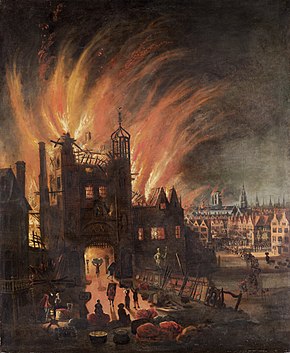















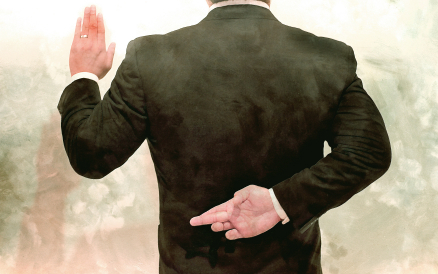


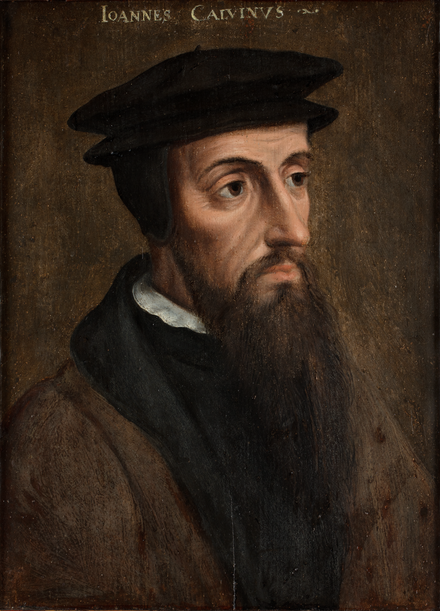


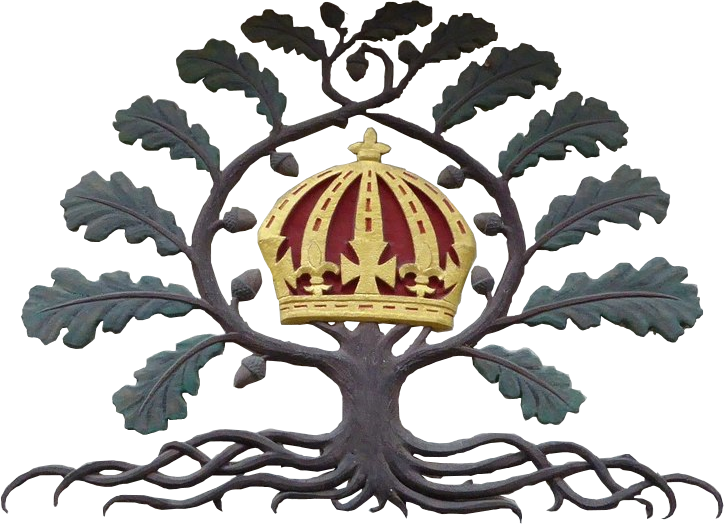






 Linear Mode
Linear Mode
